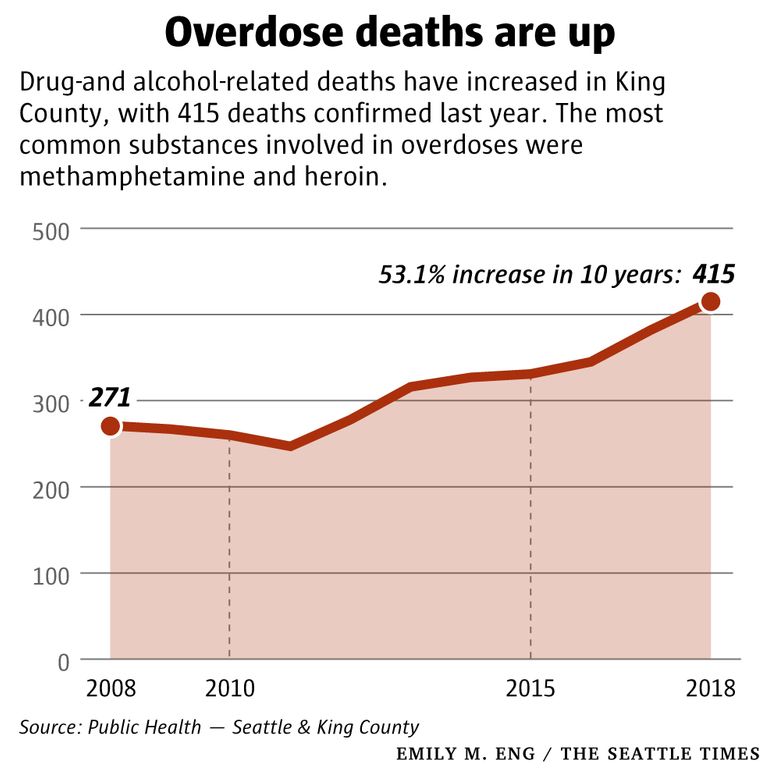
03 Jul Drug-related deaths continue to rise in King County
Drug-related deaths have continued to climb in King County, with fatal overdoses involving methamphetamine and fentanyl on the rise, according to Public Health — Seattle & King County.
Last year, 415 King County residents died from drug or alcohol use — up from 379 in 2017, according to a report released Tuesday by Public Health. Of those who died, 20% to 25% had been drinking alcohol but mostly in combination with other drugs.
Public Health found that 77 percent of people who died had multiple substances in their system. Fatal overdoses from prescription opioids and heroin have remained stable in recent years, while fentanyl-related deaths doubled since 2017, climbing to 66 last year. Illicit opioids were involved in the most deaths overall, but methamphetamine became the most common drug associated with overdose deaths for the first time, as The Seattle Times reported last month.

Of the 277 deaths that involved opioids last year, 156 involved heroin, 100 involved prescription opioids and 66 involved fentanyl. Of the 221 deaths that involved stimulants, 163 involved meth and 86 involved cocaine. Only 9 deaths were from alcohol only.
Public-health officials attribute the rise in fentanyl-related deaths to illicitly-made fentanyl, which can be found in pills and heroin sold on the streets but is not detectable.
Public Health’s report, which relies on data from the King County Medical Examiner, found that about 70% of the people who died from overdoses last year were men and most were between 30 and 59 years old. People presumed to be homeless by the medical examiner made up 16% of the deaths, despite homeless people making up less than 1% of King County’s population.
Overdose deaths were disproportionately higher among black people in King County, who make up 6.3% of the population yet account for 10% of fatal overdoses. American Indian and Alaskan Native people, who make up less than 1% of the population, accounted for 3% of deaths.
King County, like cities across the country, have focused their efforts on combating opioids. Syringe exchanges in King County distributed nearly 8 million needles last year, along with treatment medications and rescue drug NarCan, according to data collected by a drug-trends report released by University of Washington’s Alcohol and Drug Abuse Institute Tuesday.
But unlike heroin, meth addiction can’t be treated with replacement drugs.
People use meth and illicit opioids for similar reasons, according to the report. Both can easily be found for cheap. The institute’s principal research scientist Caleb Banta-Green said people use drugs like meth to manage challenges in their lives.
“Drugs may serve as an appetite suppressant when people can’t afford food, or lessen the negative impacts of current and past trauma by providing a temporary boost in dopamine to make someone feel good,” he said. “Part of the solutions we must pursue include improving the circumstances of peoples’ lives, while increasing access to comprehensive services.”
[ad_2]
Source link



No Comments